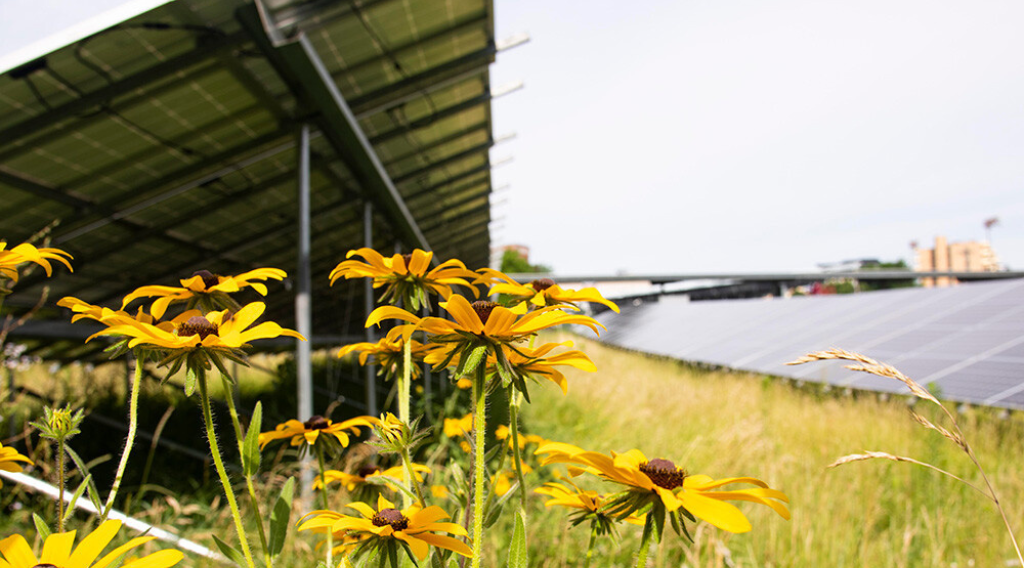In early July, five Minnesota cities (Duluth, Elk River, Morris, Rochester, and Warren) traveled to the Bundesland (State) of North Rhine-Westphalia (NRW), Germany as part of the Climate Smart Municipalities program.Along with the selected cities, a broad range of partners also participated in the program, including representatives from the University of Minnesota, MN Pollution Control Agency, Department of Commerce, Environmental Quality Board, Minnesota Credit Union Network, District Energy, and Great Plains Institute, which I was honored to represent. The program is a three-year exchange with the goal to accelerate progress on climate action through peer sharing at the local level.
Climate change is unlike any other problem we have faced before. Every country has a stake in eliminating greenhouse gas emissions –we will all feel the impact, if we have not already. Climate projections are outpacing climate realities. Globally, the hottest years in the 134-year record of global temperature tracking have all occurred between 1998 and 2015, and now 2016 is smashing monthly temperature records. On the day I write this, the record for the hottest single day was likely broken as the temperature in Kuwait hit 129.3° F – I have only ever experienced that kind of heat in a sauna; fortunately, I could get out after 10 minutes.
At a time when so many forces are working to divide us, it is critical that we come together. To share with and learn from each other. To work towards innovative solutions in a collaborative effort to solve this problem by mitigating the consequences, and minimizing conflict.
 Minnesota’s partnership with NRW is a great opportunity to expand international cooperation at the local level. At the international level, Germany is among the world leaders in its efforts to transition to clean energy sources. Interestingly, Germany’s road to a clean energy future is not rooted in addressing climate change, but rather in a desire for energy independence and an aversion to nuclear power.
Minnesota’s partnership with NRW is a great opportunity to expand international cooperation at the local level. At the international level, Germany is among the world leaders in its efforts to transition to clean energy sources. Interestingly, Germany’s road to a clean energy future is not rooted in addressing climate change, but rather in a desire for energy independence and an aversion to nuclear power.
In the 1970s, the oil crisis and growing public opposition to nuclear power led to the German Energiewende (Energy Transition). The underlying concept of Energiewende was the demonstration that economic growth could continue even as less energy is consumed. Momentum to seek alternatives to nuclear power grew in 1986 when the core of a nuclear reactor at the Chernobyl Nuclear Power Plant in Ukraine exploded, leaving 31 dead, thousands more with terminal cancer, and contaminating soil and water for years to come.
Not long after the accident at Chernobyl, the concept of global warming entered the German conscience. The pursuit of clean energy sources continued as policies expanded. In 1991, Germany adopted a feed-in tariff, which stipulated that green power must be prioritized over conventional power sources. In 2000, the feed-in tariff was strengthened through the Renewable Energy Act, which tied rates to the costs of investment and guaranteed the price of generated electricity for 20 years from the date of installation. We have since seen a surge of solar and wind energy come online throughout the country. Germany is well on the way to achieving its goal of 80% renewable energy by 2050, having produced 35% of its energy from clean sources this year.
The success of Germany’s renewable energy policies is rooted in local action. NRW is one of the states that is leading the charge. Located on the western border of Germany, NRW is the most populated state in the country with nearly 18 million residents. As Germany’s most industrial state, NRW is also the largest energy producer in the country and is responsible for more than one-third of Germany’s greenhouse gas emissions. The state is addressing climate change with a bottom-up approach, providing resources and tools to municipalities to support their individual efforts to reduce climate impact. Four of the five cities we visited have achieved gold certification through the European Energy Award program by implementing bold policies and innovative strategies to advance climate action.
Through this collaboration, we have so much to learn from our German partners, and so much we can share. If you’ve made it this far, you are probably wondering what the heck we did for a week in Germany. For that, you will have to stay tuned!


